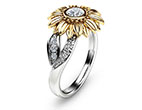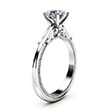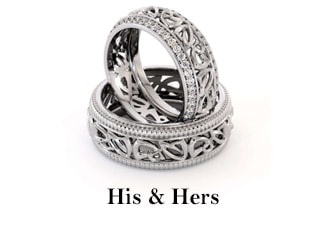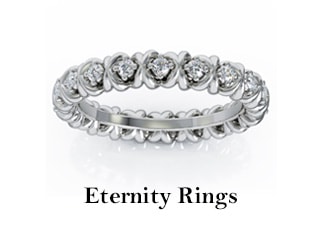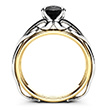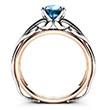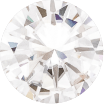What’s the difference between white, yellow and rose gold?

Eeny…meeny…miny…moe, which color to pick for my beau? We are blessed to be able to choose between so many beautiful and precious materials. But If you’ve wondered what’s the difference between white, yellow and rose gold, look no further than the little, guide below.
What is gold?
While we all know about gold, not everyone knows the behind the scenes of how it gets to our jewelry box. So let’s start by asking “what is gold?”. In technical terms, this beloved metal is a chemical element found in nature with a high atomic number. In its natural state it has a bright red-yellow hue. It’s also dense and malleable – so, to be able to use it, you have to mix it with other metals.
Different shades of gold depend on these added elements. And while the most popular shades are the triad alloy – white, yellow, and rose, you can also find it in shades of bronze, red, and even lime. Next, the following question arises “what’s the difference between them?”.
“Geometry has two great treasures; one is the Theorem of Pythagoras; the other, the division of a line into extreme and mean ratios. The first we may compare to a measure of gold; the second we may name a precious jewel.” ― Johannes Kepler
What’s the difference between white, yellow, and rose gold?
All the shades have almost the same percentage of pure gold, and you usually find them at the same price. But, of course, you have to take into consideration the brand’s value that you work with, where the gold comes from and its karat – 10K, 14K, 18K, 24K. Price also goes up if the color is trendy that year.
We measure the percentage of pure gold by karat. So, 24 karat gold is 100% pure, 18 karats is 75% pure, and so on. The most common metals that jewelers combine with gold are copper, silver, nickel, palladium, and zinc. Some specialists also use “plating” as a technique to add color, that’s why you can find two or even three different shades on the same piece.
Yellow Gold
In order to get the shiny, vintage yellow gold color, silver, copper and zinc are added. This combo presents the shade of pure gold. But it’s more delicate than other alloys. It can scratch easily and with each polish, you lose a little bit of material. Yellow gold is a classic and will always be in style, even if white and rose catch up with it.
While you get the advantage of using something closer to the original, the big disadvantage is that time will leave a mark on it.
White Gold
This mix is a combination of gold nickel, palladium, and silver. You might be surprised, but yes, there is silver in gold. The strength of the alloy depends on the proportions. For example, nickel makes it hard, so it’s used in rings and brooches; while palladium gives gold flexibility to add soft gemstones to the setting.
This particular alloy usually has a yellowish tint. This is the reason why specialists finish the product with rhodium plating. Rhodium gives the color, but it also offers a protective layer, as yellow gold is soft. The disadvantage here is that, from time to time, you have to re-plate your jewelry.
Rose Gold
The last mix of the most popular gold alloy is the rose gold, which is pure gold and copper. It can come in shades of pink, but also red, depending on the copper content. This combination used to be called “Russian Gold”, as that’s where it first appeared, in the 19th century.
When it comes to strength, the last of the pack is very sturdy, all because of copper. The big disadvantage of this romantic combination is that it can cause allergic reactions, so it’s not for everybody.
In the end, the rush for the perfect gold for your jewelry depends on what you want – classic yellow, modern white, or romantic rose? Let us know in a comment below and do check in our shop the perfect ring for your better half.



